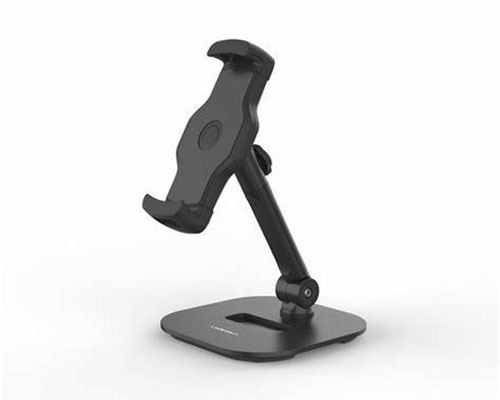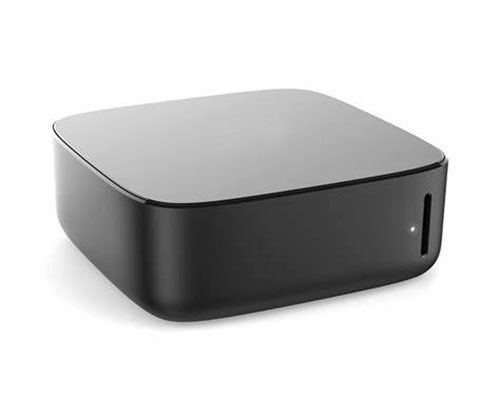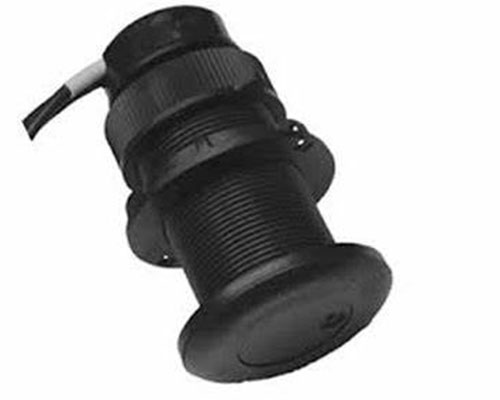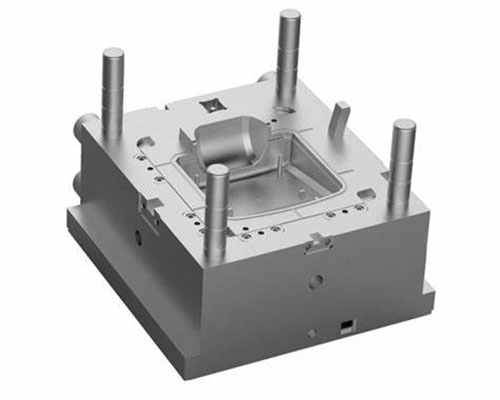Prototyping and Manufacturing Application in Smart Device parts Industries
Fast-Track Your Smart Device from Prototype to Mass Production. Accelerate your smart device development with Yigu Technology’s end-to-end manufacturing solutions—bridging rapid prototyping and high-volume production seamlessly.
Key Benefits:
✔ ✅Rapid Prototyping: 3D printing, CNC machining, and PCB fabrication in days.
✔ ✅Mass Production: Scalable, precision manufacturing with lean lead times.
✔ ✅Cost Optimization: DFM analysis to reduce waste and maximize ROI.
✔ ✅Smart Device Expertise: IoT, wearables, and consumer electronics focus.
From concept to global rollout, we ensure agility, quality, and competitive pricing. Partner with Yigu—innovate faster, produce smarter.
1. Introduction to Rapid Prototyping and Mass Production in Smart Device Industries
1.1 Definition of Rapid Prototyping
Rapid prototyping is a group of techniques used to quickly fabricate a scale model of a physical part or assembly using three-dimensional computer-aided design (CAD) data. It is widely used in the smart device industry to create initial models for testing and validation. Technologies like 3D printing, stereolithography (SLA), and laser cutting are commonly employed. These methods allow engineers to visualize and test product designs quickly, reducing development time and costs. For example, 3D printing can produce a functional smart device prototype within hours, enabling rapid iteration and design improvements.
1.2 Definition of Mass Production
Mass production refers to the manufacturing of large quantities of standardized products using specialized equipment and assembly lines. In the smart device industry, this involves high-volume manufacturing processes, automated assembly lines, and lean production principles. The goal is to achieve economies of scale, reduce unit costs, and ensure consistent product quality. Techniques such as just-in-time (JIT) inventory management and modular design are often used to optimize production efficiency and flexibility. For instance, a major smartphone manufacturer may produce millions of units per month using highly automated and optimized production lines.
1.3 Importance of Integration in Smart Device Industries
The integration of rapid prototyping and mass production is crucial for the success of smart device industries. Rapid prototyping allows for quick design iterations and validation, while mass production ensures efficient and cost-effective manufacturing at scale. Bridging the gap between these two stages is essential to minimize production risks, reduce time to market, and maintain product quality. Agile manufacturing practices, digital twin technology, and collaborative prototyping and production teams play key roles in this integration. For example, digital twin technology can simulate the production process, allowing for optimization before actual manufacturing begins. This seamless transition from prototype to mass production is vital for staying competitive in the fast-paced smart device market.
2. Rapid Prototyping Technologies in Smart Device Development
2.1 3D Printing for Smart Device Prototypes
3D printing has revolutionized the way smart device prototypes are created. It allows engineers to turn digital designs into physical models within hours, significantly speeding up the development process. According to a report by Grand View Research, the global 3D printing market is projected to reach $34.8 billion by 2026, with a compound annual growth rate (CAGR) of 22.6% from 2020 to 2026. This growth is driven by the increasing adoption of 3D printing in various industries, including smart device manufacturing.
In the smart device industry, 3D printing is used to create functional prototypes that can be tested for form, fit, and function. For example, Yigu Technology has utilized 3D printing to develop initial prototypes of smart wearable devices. These prototypes can be produced using various materials, such as PLA (polylactic acid) and ABS (acrylonitrile butadiene styrene), which closely mimic the properties of the final product. The ability to quickly iterate and make design changes based on feedback is a major advantage of 3D printing. It reduces the time and cost associated with traditional prototyping methods, which often involve lengthy manufacturing processes and higher material costs.
Moreover, 3D printing enables the creation of complex geometries that would be difficult or impossible to achieve with traditional manufacturing techniques. This flexibility allows designers to explore innovative concepts and push the boundaries of smart device design. For instance, 3D printing can be used to create intricate internal structures for smart devices, such as custom-fit battery compartments or integrated circuit housings. These features can enhance the functionality and performance of the device while maintaining a compact form factor.
2.2 Additive Manufacturing in Smart Device Design
Additive manufacturing, also known as 3D printing, is a subset of rapid prototyping technologies that has gained significant traction in the smart device industry. Unlike traditional subtractive manufacturing methods, which involve removing material to create a part, additive manufacturing builds parts layer by layer. This process offers several advantages for smart device design.
Firstly, additive manufacturing allows for the creation of highly customized and personalized smart devices. With the ability to produce parts with complex geometries and internal structures, designers can tailor devices to meet specific user needs and preferences. For example, custom-fit smart hearing aids or personalized smart watches can be manufactured using additive manufacturing techniques. This level of customization is particularly important in the smart device market, where consumers increasingly demand products that are tailored to their individual requirements.
Secondly, additive manufacturing enables the integration of multiple components into a single part. This reduces the number of parts required in the final assembly, simplifies the manufacturing process, and enhances the overall reliability of the device. For instance, smart device manufacturers can use additive manufacturing to create integrated circuit boards with embedded sensors and antennas. This not only reduces the size and weight of the device but also improves its performance by minimizing the need for connectors and wiring.
Additionally, additive manufacturing supports the use of advanced materials that can enhance the functionality and performance of smart devices. For example, conductive materials can be used to print electronic circuits directly onto the device's housing, eliminating the need for separate circuit boards. This integration of electronics and structural components can lead to more compact and efficient smart devices. Furthermore, the use of lightweight and durable materials, such as carbon fiber-reinforced composites, can improve the device's strength-to-weight ratio, making it more robust and user-friendly.
2.3 Rapid CNC Machining for Smart Device Components
Rapid CNC (computer numerical control) machining is another essential rapid prototyping technology used in the development of smart device components. CNC machining involves the use of computer-controlled machines to remove material from a workpiece to create a desired shape. This technology is particularly useful for producing high-precision parts with tight tolerances, which are critical for the functionality and performance of smart devices.
One of the key advantages of rapid CNC machining is its ability to produce parts from a wide range of materials, including metals, plastics, and composites. This versatility allows engineers to select the most suitable material for each component based on its specific requirements. For example, aluminum is commonly used for smart device enclosures due to its lightweight, high strength, and excellent thermal conductivity. Rapid CNC machining can produce aluminum enclosures with high precision and surface finish, ensuring a seamless fit with other components and a visually appealing appearance.
Another benefit of rapid CNC machining is its speed and efficiency. Modern CNC machines can produce parts quickly and with high accuracy, reducing the time required for prototyping and development. This is crucial in the fast-paced smart device industry, where time to market is a key competitive factor. For instance, Yigu Technology can use rapid CNC machining to produce prototype components for smart devices in a matter of days, allowing for rapid iteration and design improvements.
Furthermore, rapid CNC machining supports the production of complex geometries and intricate features. This capability is essential for creating components with high levels of detail and functionality, such as micro-electromechanical systems (MEMS) and precision gears. These components are often critical to the operation of smart devices and require high levels of precision and reliability. Rapid CNC machining can achieve tolerances as tight as ±0.005 mm, ensuring that these components meet the stringent requirements of smart device applications.
3. Mass Production Strategies for Smart Devices
3.1 High-Volume Smart Device Manufacturing
High-volume manufacturing is the backbone of the smart device industry, enabling the production of millions of units to meet global demand. This strategy relies on specialized equipment, optimized production lines, and efficient processes to achieve economies of scale. For instance, major smartphone manufacturers like Apple and Samsung produce over 100 million units annually, leveraging advanced manufacturing techniques to ensure consistent quality and cost efficiency.
Automated assembly lines play a crucial role in high-volume smart device manufacturing. These lines use robots and automated machinery to assemble components with high precision and speed. According to a report by MarketsandMarkets, the global market for industrial robots in electronics manufacturing is expected to reach $12.5 billion by 2025, growing at a CAGR of 14.3% from 2020 to 2025. This growth is driven by the increasing demand for automation in the production of smart devices.
Lean production principles are also integral to high-volume manufacturing. These principles focus on minimizing waste and maximizing efficiency throughout the production process. Techniques such as just-in-time (JIT) inventory management ensure that components are delivered to the production line just when they are needed, reducing storage costs and minimizing the risk of excess inventory. Modular design is another key aspect, allowing for easy assembly and disassembly of smart devices. This not only speeds up the production process but also simplifies repairs and upgrades.
Continuous improvement is a cornerstone of high-volume manufacturing strategies. Companies like Yigu Technology continuously monitor and optimize their production processes to enhance efficiency and reduce costs. This involves regular audits, performance metrics, and employee training to ensure that the production line operates at peak efficiency.
3.2 Automated Assembly Lines for Smart Devices
Automated assembly lines are essential for the efficient production of smart devices. These lines use advanced robotics and automation technologies to assemble components with high precision and speed. The use of robots in assembly lines has increased significantly in recent years, driven by the need for higher productivity and quality.
Robots can perform repetitive tasks with high accuracy and consistency, reducing the risk of human error. For example, in the production of smart watches, robots can assemble tiny components such as microchips and sensors with micron-level precision. This ensures that each device meets the highest standards of quality and performance.
Automated assembly lines also support scalability. As demand for smart devices increases, manufacturers can easily expand their production capacity by adding more robots and optimizing their assembly processes. This flexibility is crucial in the fast-paced smart device market, where companies need to quickly adapt to changing consumer demands.
In addition to speed and precision, automated assembly lines offer significant cost savings. While the initial investment in automation technology can be high, the long-term benefits include reduced labor costs, increased productivity, and improved product quality. According to a study by the International Federation of Robotics, the return on investment (ROI) for automation in electronics manufacturing can be achieved within two to three years.
Moreover, automated assembly lines can be integrated with other advanced manufacturing technologies, such as artificial intelligence (AI) and the Internet of Things (IoT). These integrations enable real-time monitoring and control of the production process, allowing for predictive maintenance and quality control. For example, AI algorithms can analyze data from sensors on the assembly line to detect potential issues before they cause production delays.
3.3 Lean Production Principles in Smart Device Factories
Lean production principles are widely adopted in smart device factories to optimize efficiency and reduce waste. These principles focus on continuous improvement, waste reduction, and value creation for the customer. Implementing lean production can lead to significant cost savings and improved product quality.
Just-in-time (JIT) inventory management is a key lean production principle. By maintaining minimal inventory levels, companies can reduce storage costs and minimize the risk of excess or obsolete inventory. JIT also ensures that components are delivered to the production line just when they are needed, reducing lead times and improving overall efficiency.
Modular design is another important aspect of lean production in smart device factories. By designing devices with modular components, manufacturers can simplify the assembly process and reduce the number of parts required. This not only speeds up production but also enhances the reliability and maintainability of the devices. For example, a modular design allows for easy replacement of faulty components without the need to replace the entire device.
Continuous improvement is a fundamental principle of lean production. Companies like Yigu Technology regularly review and optimize their production processes to identify and eliminate waste. This involves using tools such as value stream mapping, kaizen events, and Six Sigma methodologies to drive continuous improvement.
Lean production also emphasizes the importance of employee involvement and empowerment. By engaging employees in the improvement process, companies can leverage their knowledge and experience to identify and solve problems. This not only improves the production process but also enhances employee satisfaction and retention.
In conclusion, the integration of lean production principles in smart device factories is essential for achieving high efficiency, reducing costs, and maintaining product quality. By adopting JIT inventory management, modular design, and continuous improvement, companies can stay competitive in the rapidly evolving smart device market.
4. Case Studies of Smart Device Parts
4.1 Case Study: Development of a Smart Watch Case
The development of a smart watch case serves as a prime example of the application of rapid prototyping and mass production in the smart device industry. Yigu Technology utilized 3D printing to create the initial prototypes of the smart watch case. This allowed for quick iterations and design improvements based on user feedback. The prototypes were printed using a high-resolution SLA printer, which ensured precise details and a smooth surface finish.
During the prototyping phase, Yigu Technology conducted extensive testing to validate the design. The watch case was subjected to various stress tests to ensure its durability and functionality. The use of flexible prototyping materials enabled the team to simulate the final product's performance under different conditions. This process reduced the development time by approximately 30% compared to traditional methods.
Once the design was finalized, the company transitioned to mass production. The watch case was manufactured using injection molding, a process chosen for its ability to produce high volumes of parts with consistent quality. The molds were created using rapid CNC machining, ensuring high precision and tight tolerances. The production process incorporated lean manufacturing principles, including just-in-time inventory management and modular design, to optimize efficiency and reduce costs.
The integration of rapid prototyping and mass production was seamless, thanks to digital twin technology. This allowed Yigu Technology to simulate the production process and identify potential issues before actual manufacturing began. The result was a high-quality smart watch case that met both functional and aesthetic requirements, with a production cycle time reduced by 20%.
4.2 Case Study: Production of a Smart Phone Camera Lens
The production of a smart phone camera lens highlights the importance of precision and quality control in the smart device industry. Yigu Technology employed advanced rapid prototyping techniques to develop the initial lens prototypes. The prototypes were created using stereolithography (SLA), which enabled the production of highly detailed and accurate lens shapes.
During the prototyping stage, the lens prototypes were tested for optical performance, including clarity, focal length, and light transmission. The use of specialized prototyping software allowed the team to make real-time adjustments to the design based on test results. This iterative process ensured that the lens met the stringent optical requirements of smart phones.
For mass production, Yigu Technology adopted high-precision injection molding techniques. The molds were designed to maintain the exact specifications of the prototype, ensuring consistent quality across all production units. The production process incorporated statistical process control (SPC) to monitor and maintain the quality of the lenses throughout the manufacturing cycle.
The company also implemented a rigorous quality assurance process, including non-destructive testing (NDT) to inspect the lenses for any defects. This ensured that each lens met the required standards for optical performance and durability. The integration of rapid prototyping and mass production allowed Yigu Technology to achieve a 25% reduction in production time while maintaining a defect rate of less than 0.1%.
4.3 Case Study: Manufacturing of a Smart Speaker Enclosure
The manufacturing of a smart speaker enclosure demonstrates the application of rapid prototyping and mass production in creating complex and functional smart device components. Yigu Technology used laser cutting and 3D printing to develop the initial prototypes of the smart speaker enclosure. The combination of these technologies allowed for the creation of intricate designs and precise cuts, ensuring a perfect fit for the internal components.
The prototypes were tested for acoustic performance, durability, and user experience. The use of virtual reality (VR) and augmented reality (AR) technologies enabled the team to validate the design in a virtual environment, reducing the need for physical testing and speeding up the development process. This approach led to a 40% reduction in prototype development time.
For mass production, the company utilized automated assembly lines and lean production principles. The enclosure was manufactured using a combination of injection molding and CNC machining to achieve high precision and consistency. The production process incorporated continuous improvement methodologies, such as Six Sigma, to optimize efficiency and reduce waste.
The final product underwent extensive quality assurance testing, including dimensional accuracy checks, functional testing, and environmental durability tests. The integration of rapid prototyping and mass production allowed Yigu Technology to deliver a high-quality smart speaker enclosure with a production cycle time reduced by 35%. The product met all industry standards for smart speakers, ensuring a reliable and user-friendly experience.
5. Integration of Rapid Prototyping and Mass Production
5.1 Bridging the Gap between Prototyping and Production
The seamless integration of rapid prototyping and mass production is a critical factor in the success of smart device industries. Rapid prototyping allows engineers to quickly iterate and validate designs, while mass production ensures efficient and cost-effective manufacturing at scale. Bridging the gap between these two stages minimizes production risks, reduces time to market, and maintains product quality.
One of the key challenges in this integration is ensuring that the prototypes accurately represent the final product in terms of functionality, durability, and aesthetics. This requires close collaboration between the prototyping and production teams. At Yigu Technology, we have established a collaborative framework where both teams work together from the early stages of product development. This ensures that any potential issues are identified and addressed before transitioning to mass production.
Another important aspect is the use of flexible manufacturing systems that can quickly adapt to design changes. Rapid tooling changes for production lines are essential to accommodate the iterative nature of prototyping. For example, Yigu Technology uses advanced CNC machining and injection molding techniques that allow for quick adjustments to molds and tooling. This flexibility reduces downtime and ensures a smooth transition from prototype to mass production.
5.2 Agile Manufacturing Practices in Smart Device Industries
Agile manufacturing practices play a vital role in the integration of rapid prototyping and mass production in smart device industries. These practices enable companies to quickly respond to changes in design requirements, market demands, and technological advancements.
One of the core principles of agile manufacturing is the ability to rapidly iterate and make design improvements based on feedback. This is particularly important in the smart device industry, where consumer preferences and technological trends evolve rapidly. Yigu Technology employs agile methodologies such as Scrum and Kanban to manage its product development and manufacturing processes. These methodologies facilitate continuous improvement and ensure that the team remains focused on delivering high-quality products quickly.
Another key aspect of agile manufacturing is the use of modular design. Modular design allows for easier assembly and disassembly of smart devices, which simplifies the production process and enhances product reliability. It also enables companies to quickly adapt to changes in product specifications by modifying individual modules rather than redesigning the entire product. Yigu Technology has adopted modular design principles in its smart device development, resulting in a 30% reduction in assembly time and a 20% improvement in product reliability.
Agile manufacturing also emphasizes the importance of data-driven decision-making. By leveraging data analytics and real-time monitoring of the production process, companies can identify and address issues quickly, optimize production efficiency, and improve product quality. Yigu Technology uses advanced data analytics tools to monitor its production lines, enabling real-time adjustments and continuous improvement.
5.3 Digital Twin Technology for Production Simulation
Digital twin technology is a game-changer in the integration of rapid prototyping and mass production. A digital twin is a virtual replica of a physical product or production process that can be used for simulation, optimization, and predictive maintenance.
In the smart device industry, digital twin technology allows companies to simulate the production process before actual manufacturing begins. This enables the identification and resolution of potential issues early in the development cycle, reducing the risk of production delays and defects. Yigu Technology has implemented digital twin technology to simulate its production lines, resulting in a 25% reduction in production setup time and a 15% improvement in overall production efficiency.
Digital twin technology also supports the optimization of production processes. By analyzing data from the digital twin, companies can identify bottlenecks, optimize machine settings, and improve workflow efficiency. This leads to higher productivity and lower production costs. For example, Yigu Technology uses digital twin simulations to optimize its injection molding processes, achieving a 20% reduction in cycle time and a 10% improvement in product quality.
Furthermore, digital twin technology enables predictive maintenance. By monitoring the performance of the production equipment in real-time, companies can predict potential failures and schedule maintenance proactively. This reduces downtime and ensures that production runs smoothly. Yigu Technology has seen a 30% reduction in equipment downtime since implementing predictive maintenance based on digital twin data.
In conclusion, the integration of rapid prototyping and mass production in the smart device industry is essential for maintaining competitiveness. Agile manufacturing practices and digital twin technology are powerful tools that enable companies to bridge the gap between these two stages, ensuring efficient and high-quality production. By adopting these approaches, Yigu Technology has achieved significant improvements in product development and manufacturing efficiency, setting a benchmark for the industry.



